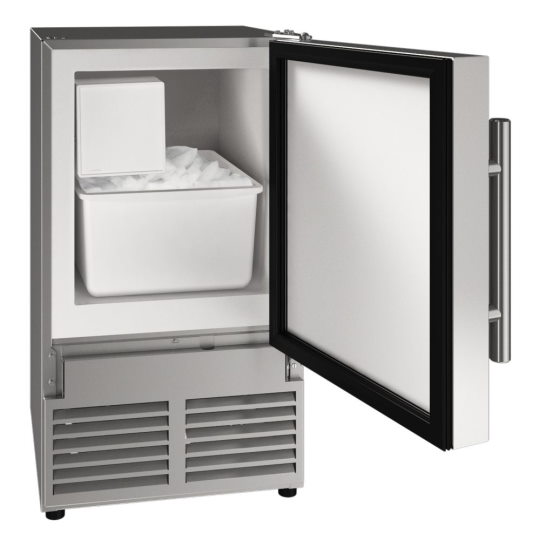How to Clean U-Line Ice Maker
Introduction
Hey everyone! Today we will be talking about how to clean U-line ice maker. We will be asking the most important questions regarding this topic. The questions will be these: How do you clean sediment out of ice maker? Does U-line ice maker have a filter? How often should an ice maker be cleaned?
We hope that our instructions will help you clean your ice maker. We also hope that you will find answers to all of your questions. So, without further ado, let’s get started!
How Do You Clean Sediment Out of Ice Maker?

Cleaning an ice maker at home takes a little more effort than those linked to refrigerators. It is probably a good idea to read the manual before you start cleaning this equipment to make sure you are doing it correctly. Unplugging the refrigerator is the first step. Then, use a washcloth to apply a mixture of vinegar and water 50/50 to the ice maker.
Furthermore, we encourage you to use a dipped old toothbrush in baking soda to scrape the areas where the scale is visible. Reassemble the machine after drying it out, then plug your refrigerator back in. You can purchase commercial descales to treat mineral accumulation.
That being said, using these items might cause harm to an ice maker. Using powerful chemicals in a location where ice is made could raise safety concerns because, if accidentally consumed, the cleaner might not be suitable for consumption. The simplest cleaning method for a U-line ice maker is outside cleaning. Combine a mild detergent with warm water to clean the surfaces.
On various surfaces, use cleaning and polish made especially for stainless steel. To clean the glass surfaces, use a non-chlorine glass cleaner. For safety reasons, always disable the ice maker before continuing with this step. Any removable components should be taken out and washed thoroughly in warm water with a mild detergent.
After a thorough rinse, thoroughly dry the area. The remaining interior surfaces should be cleaned with a soft cloth or clean sponge and warm water. The ice that has formed should not be used; instead, it should be disposed of in the sink. Refill it with fresh water, then let it run through another cycle.
Does U-Line Ice Maker Have a Filter?
Yes, there is a filter on the U-line ice maker. The U-line ice maker’s unrivaled performance is one of its unique features. It can produce up to 90 lbs. of ice each day and store 30 lbs. of ice. Due to the flexibility of the ice maker, these products provide five levels of ice firmness, ranging from chewy and squishy to thick and crushed circular cubes.
This appliance also features a water dispenser and filter inside, programmable LED lighting, and a soft-shut door with adjustable hinges. These devices come in stainless steel or integrated door finishes that accommodate a custom door panel to match the furniture around them. They can be utilized either integrated or independently.
Unknown to you, your ice machine can feature a water filter. Due to all of those minerals, if it becomes blocked, it won’t allow as much water to pass, impacting how well the machine functions. My own ice maker’s terrible ice is likely the result of an outdated filter. Every six months, Keeler advises changing the water filter. Follow the manufacturer’s directions.
It is a good reminder to do it each time you replace the smoke alarm’s batteries. After eliminating the accumulation, it’s essential to maintain your ice maker to prevent scaling. According to Coast Distributors, water filters should be changed at least once every 12 months, ideally more frequently every six. This should stop minerals from entering your ice maker and scale buildup.
How Often Should an Ice Maker Be Cleaned?

The suggested frequency of cleaning an industrial ice machine varies. The used volume and water quality in each area typically determine this. Manufacturers will provide cleaning guidelines based on their products, but these should only be used as a basic guide; further cleaning is frequently required to guarantee hygienic operation.
Every other week, generally close to midnight when ice is not required, is when we propose cleaning. Just as crucial as battling bacteria is clearing up any potentially harmful slime or mold buildup when air is pulled into the apparatus while it is in use. Never wait for warning indicators, including soft, crooked, cloudy cubes or a strong stench, to clean.
Since ice must be dealt with and stored similarly to food in compliance with FDA regulations, ice makers need to be cleaned on a regular basis. Ice makers must be cleaned and disinfected according to the manufacturer’s recommendations, typically at least twice a year.
Depending on the amount you use it, where it is located, and the water quality, you might need to clean it fairly regularly. For more heavily used devices next to a kitchen line, you might need to clean the equipment as regularly as once a month. Follow a strict schedule to prevent becoming reactive rather than proactive.
Ice can transmit sickness just as easily as other food sources if it has been contaminated with bacteria, mold, or viruses. If your ice is tainted, you won’t even realize it until it’s too late. Your ice could look, smell, and taste good, but it might also contain dangerous microorganisms.
Conclusion
We have talked about how to clean U-line ice maker and how often to clean it. We have asked and answered important questions regarding the topic. We hope that you enjoyed our article and that you found answers to your questions about the product. Have a good day, and take care!

